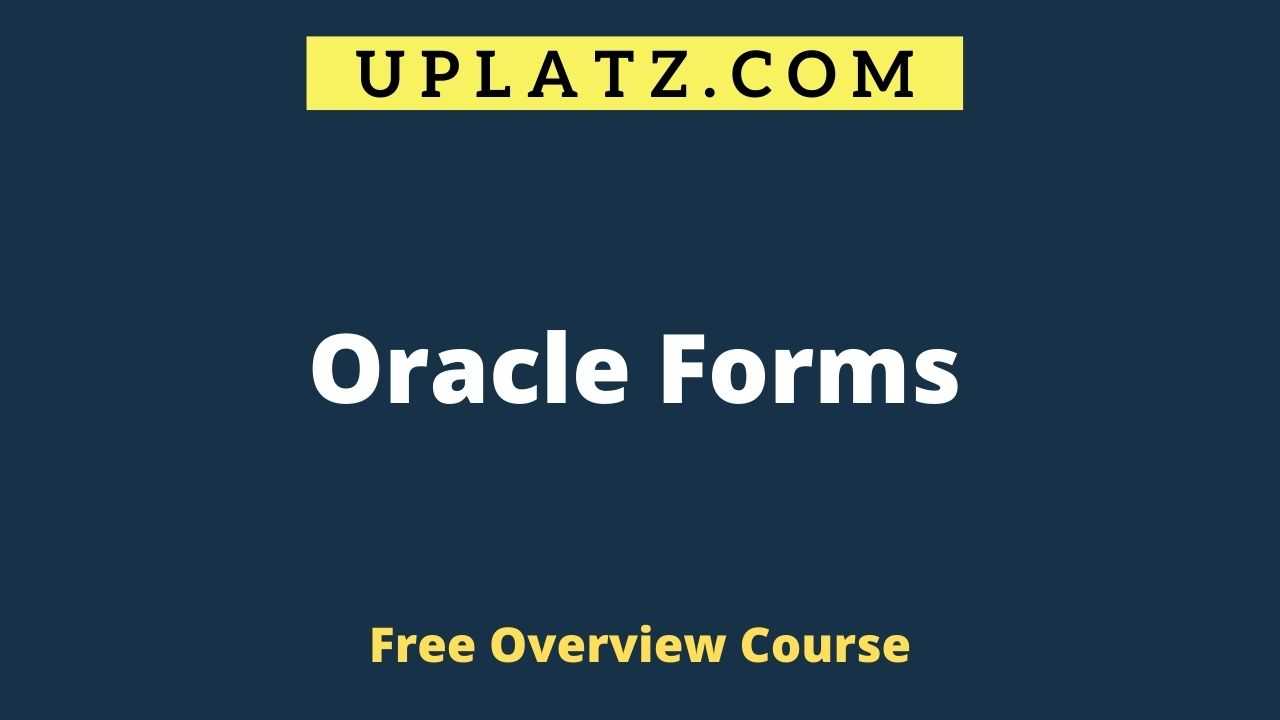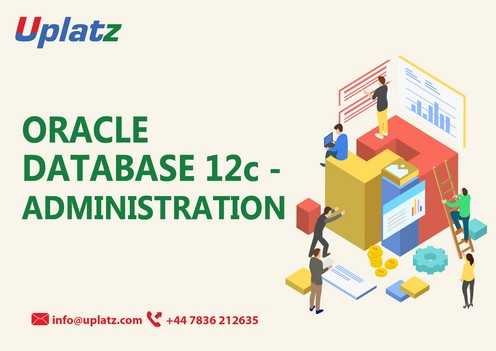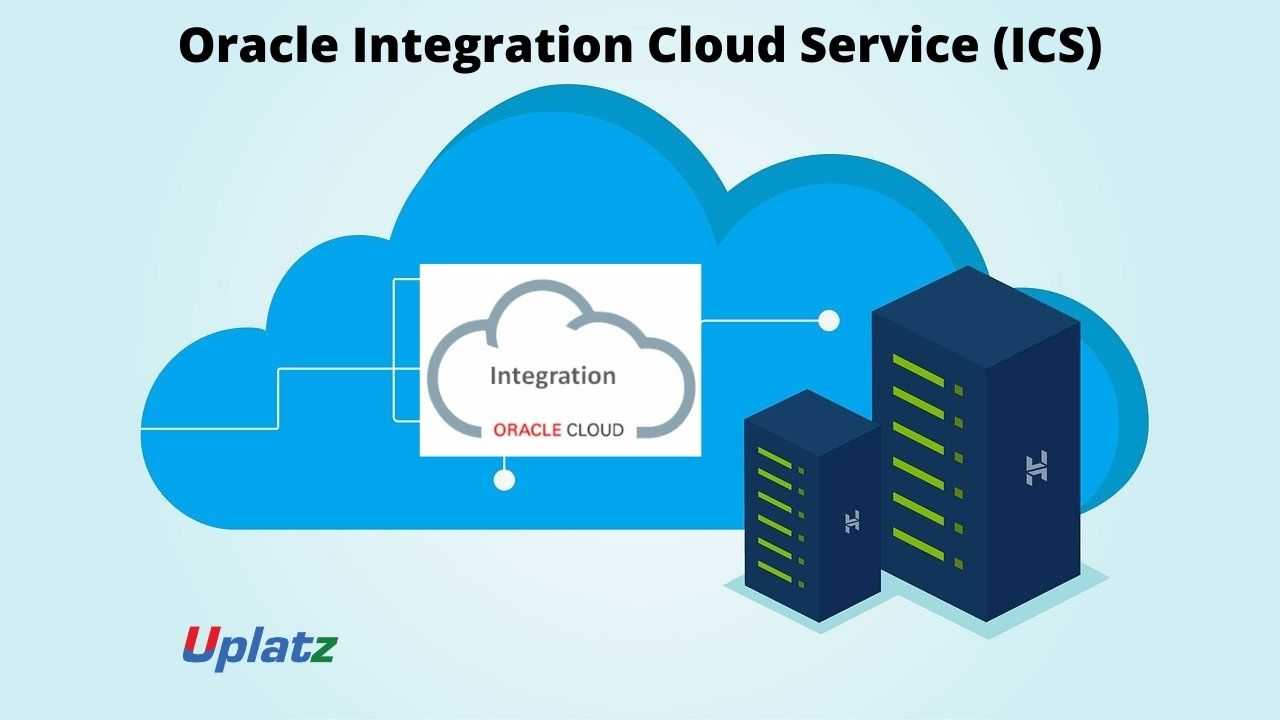Overview Course - Oracle Forms
Learn how to write Oracle Form applications which interface with an Oracle database and run on the web. View Course Curriculum
Price Match Guarantee
Full Lifetime Access
Access on any Device
Technical Support
Secure Checkout
Course Completion Certificate
View Course Curriculum
Price Match Guarantee
Full Lifetime Access
Access on any Device
Technical Support
Secure Checkout
Course Completion Certificate
 56% Started a new career
BUY THIS COURSE (GBP 10)
56% Started a new career
BUY THIS COURSE (GBP 10)
-
 67% Got a pay increase and promotion
67% Got a pay increase and promotion
Students also bought -
-

- Oracle Forms
- 10 Hours
- GBP 29
- 799 Learners
-

- Oracle DBA
- 10 Hours
- GBP 29
- 478 Learners
-

- Oracle ICS (Integration Cloud Service)
- 20 Hours
- GBP 29
- 58 Learners

This is an overview course on Oracle Forms while the complete detailed-level Oracle Forms course is available at - https://training.uplatz.com/online-it-course.php?id=oracle-forms-43. Oracle Forms (part of the Oracle Developer Suite - formerly called Developer 2000 or D2K) is a Rapid Application Development (RAD) environment for developing database applications.
It provides the user interface that is used to present the data to the user. This data is retrieved from the Oracle database and displayed to the user. The language used inside is PL/SQL. Thus, Oracle Forms allow you to rapidly create applications by using your database skills. If required, forms can be integrated with web services or Java to follow SOA architecture.
Oracle Forms include two components -
1) Forms Developer - It helps in the development and compilation of Oracle Forms;
2) Forms Services - It is considered for the deployment of Forms.
You can even create routing and processing logic which are called upon a specific action in the form.
This is an overview course on Oracle Forms provided by Uplatz. With the complete Oracle Forms training you will learn how to build complex and sophisticated reports from any data source format using Oracle Reports Developer.
Gain the skills to configure, administer and use Oracle Forms Builder to rapidly build scalable, high-performance applications for the Web. By the end of this Oracle Forms training, the students will have developed a complete multi-window application that integrates library and menu modules with forms modules.
The Oracle Forms course will also enable students to develop, implement and deploy internet applications using Oracle Forms Application. The main objectives of this course include:
a) Develop a Forms application, a menu, and a library;
b) Use the PL/SQL Editor in Oracle Forms;
c) Develop tabular and master/detail reports;
d) Use the Data Model Editor, Parameter Form Editor, and Program Unit Editor in Oracle Reports.
Course/Topic - Oracle Forms overview - all lectures
-
Introduction to Oracle Forms - Creating Datablock and Simple Form
-
Visual Attribute and Property Class
• Learn how to taking advantage of built-in functions and procedures.
• Writing efficient and well-tuned client-side logic.
• Integrating multiple Oracle10g modules into enterprise applications.
• Exploiting object-oriented features to maximize reuse of components.
• Specialized techniques such as hierarchical trees, procedure data blocks, and timers.
• Integrating forms logic with database server objects into a cohesive solution.
• Learn Oracle Forms And Reports with Online Practices, in-class Seminars, and Certifications from the list of world-class Oracle Forms And Reports trainers.
• Learn to building client-side triggers and program units to customize forms applications.
• Learn how to dynamically control form objects and behavior during runtime.
· Introduction to Oracle Forms
· Triggers and Alerts and Editors
· LOV and Record Group
· Master Detail Form
· Menu
· Visual Attribute and Property Class
· Program Units and PL-SQL Libraries
· Parameters
Oracle Forms is a component of Oracle Apps Middleware and is used for creating screens that interact with an Oracle database. It has an Integrated Development Environment (IDE) including an object navigator, code editor and property sheet that uses PL/SQL programming language.
Oracle Forms is a long-established technology to design and build enterprise applications quickly and efficiently. Many mid-to-large size enterprise applications across industries are built on Oracle Forms.
Oracle Apps Forms/Templates and Reports module makes you understand the designing of reports and forms using Oracle Apps. Oracle Forms Developer is used to develop a form that can access an Oracle database and present the data. In summary, Oracle Forms is a layer of software for creating user interface (screens) that interact with an Oracle database.
This Oracle Forms course by Uplatz will teach you how to use Oracle Forms to design the front-end design and coding for back-end processing. You will be using PL/SQL programming to create Program units to process data held in Oracle database.
This Oracle Forms training course is designed to help you master the Oracle Forms tool/technology and to prepare the learners to clear the Oracle certified Form Developer Examination.
The Oracle Forms overview course provides fundamental knowledge about oracle forms technology, sub-component of oracle fusion middleware The learners get to know the benefits of Oracle forms and to create forms that can access oracle database.
Oracle Form Developers gain proficiency in understanding oracle forms modules and design forms using oracle apps. The Form Developer develops the knowledge and skills related to Oracle Form technology.
Uplatz online training ensures the participants to successfully go through the Oracle Forms concepts and their application in practical scenarios.
Course Completion Certificate will be awarded by Uplatz upon the completion of the Oracle Forms Overview course training.
The Oracle Form certification exam validates that the participants possess the basic concepts, competencies and skills needed for Oracle Forms.
Below given are the Certification details of Oracle Fusion Middleware 11g: Build Applications with Oracle Forms
· Certification Level: Professional
· Exam Name: Oracle Fusion Middleware 11g: Build Application with Oracle Forms
· Exam Code: 1Z0-151
· Exam Mode: Online
· Total Number of Questions: 80
· Pass Score: 64%
· Time Duration: 135 Minutes
· Exam Price: $330
An Oracle Forms Developer draws an average salary of $110,857 per year depending on the skill, knowledge and hands-on practice.
The Oracle Form Developers have major demand in global-based companies and MNC’s. The Oracle Form Developer is responsible for creating scalable, high-performance web applications.
The Oracle Form Developer course is ideally designed for individuals who possess a strong understanding in SQL or PL/SQL fundamentals.
After pursuing the full Oracle Form course, the participants can pursue a wide range of career paths.
The following are the job titles:
· Form Developer Associate
· Application Developer
· Oracle Form Builder
· Application Builder
· Web Developer
· Full Stack Web Developer
· Web Designer
Highly-skilled Form Developer professionals can build robust, high-performance web applications.
Q #1) What do you understand by Oracle Forms and why are they required?
Oracle Forms are the user interfaces that are developed to present the data to the user. This data can be presented once retrieved from the Oracle database. If required, forms can be integrated with web services or Java to follow SOA architecture. Forms are created at source as .fmb files and later compiled into .fmx (executable file).
Oracle Forms include:
- Forms Developer: It helps in the development and compilation of Oracle Forms.
- Forms Services: It is considered for the deployment of Forms.
Q #2) Explain the different levels at which Oracle Form Services interact.
Oracle Form Services is a three-tier application and hence it will interact at the below levels:
- Client Level
- Server Level
- Database Level
At the client level, HTTP requests will be sent by a client to the system. This request will be received by the Forms Listener Servlet at the server and it will initiate Forms Runtime process. This process will send the request to the database to retrieve the information and send it back to the client.
This completes the workflow of user interaction through Oracle Forms Services.
Q #3) Can we invoke one form from another in a multi-forms application?
Yes, we can invoke one form from another with the help of the below built-in functions:
- OPEN_FORM: It opens up the requested form along with the current form and the user can navigate to both the forms in the same session.
- NEW_FORM: It will also open up a new form but after exiting from the current form.
- CALL_FORM: It will open the requested form by keeping the parent form active but hidden. Once exited from the requested form, control goes back to the parent form.
Q #4) What do you understand by LOV and how can it be used?
LOV is a list of values populated in a pop-up window and is displayed to the end-user for selection. These values can be assigned and invoked statically or dynamically in LOV.
There is a related property known as ‘LOV for Validation' which is used to validate contents of LOV. If this property is set to true, the current value of text item is compared with the values displayed in the first column of LOV.
If any of the LOV values match the text item, then validation succeeds and LOV will not be displayed. If the value does not match, LOV will be displayed and a search will happen based on the text item.
Q #5) What is a canvas in Oracle Forms?
Canvas is a layer within a window where the visual objects like interface items or graphics can be placed.
Oracle Forms support four types of canvas as mentioned below:
- Content canvas (default canvas)
- Tab canvas
- Toolbar canvas
- Stacked canvas
Q #6) In what sequence do triggers get fired by Oracle Forms?
Oracle Forms follow the below hierarchy for trigger execution:
- Pre-form
- Pre-block
- Pre-record
- Pre-text item
- When-new-form-instance
- When-new-block-instance
- When-new-record-instance
- When-new-item-instance
- Post-text_item
- Post-Record
- Post-Block
- Post-Form
Q #7) Explain the Master-Detail relationship with some examples.
Master-Detail relationship is the relationship among different business entities which follows the parent-child relationship pattern. There will be one parent entity linked to many child entities.
For Example, we can have one master named COMPANY with different details as DEPARTMENTS (HR, FINANCE, OPERATIONS, ADMIN, etc.).
This relationship can be implemented with the help of two data blocks where the first data block represents the master table while the other represents a detailed table.
Q #8) Name the different triggers associated with Oracle Forms having a master-detail relationship.
Enlisted triggers gets created during the creation of the master-detail block:
- ON-CHECK-DELETE-MASTER
- ON-CLEAR-DETAILS
- ON-POPULATE-DETAILS
Q #9) What are the various configuration files that are used by Oracle Forms?
The configuration files include:
- default.env
- formsweb.cfg
- ftrace.cfg
- base.htm,basejini.htm & basejpi.htm
Using the above config files, a user can specify different parameters for the forms as per the requirement.
Q #10) What do we mean by record group in Oracle Forms?
A record group is a framework of rows and columns within the Oracle Forms similar to a table in the Oracle database.
Record groups can be:
- Query Record Group
- Non-Query Record Group
- Static Record Group
A query record group is associated to SELECT statement and can be created or updated during design or execution. While a non-query record group is not associated with any query and hence it can be created or updated during execution only.
The static record group is again not associated with any query and can be created or updated during the design phase only.
Q #11) What is an Oracle Report? List its various types.
Oracle Report is a tool provided by Oracle Fusion Middleware, which is used to generate reports based on the data stored in the Oracle database. It consists of Oracle Reports Developer, a report designing tool and Oracle Application Server Reports Services.
Various types of Report include:
- Tabular
- Master-Detail Reports
- Form Reports
- Form Letter Reports
- Mailing Labels Reports
- Matrix Reports
Q #12) What is an implicit anchor and how is it a different form explicit anchor in a report builder?
An anchor is used to determine the position of an object in horizontal and vertical directions. This position of an object will always be relative to the position of the other objects, which can be called parent objects for these child objects.
During runtime, an implicit anchor will be generated by the Oracle Forms Builder for each layout object, which is not holding an explicit anchor. The implicit anchor will be created during the runtime of a report while explicit anchors are created by a user explicitly.
Q #13) Name different triggers supported by Oracle Reports and their firing order.
Listed below are the triggers supported by Oracle Reports:
- Before Parameter Form: Gets fired before the display of runtime parameter form on the screen.
- After Parameter Form: Gets fired after the display of runtime parameter form on the screen.
- Before Report: Gets fired before the execution of a report but after the queries get parsed.
- Between Pages: Gets fired before formatting is done for every page except the first page.
- After Report: Gets fired either at the exit of the Previewer or once the report output is shared with the destination.
Q #14) What is the difference between bind and lexical parameter?
Bind parameters are the variables, which can replace a single value in SQL/PLSQL such as number, character, string or date.
While lexical parameter can replace clauses or multiple values embedded in SELECT query possibly after SELECT, FROM, WHERE, GROUP BY, ORDER BY, HAVING, CONNECT BY, and START WITH.
Q #15) List the different types of columns in Oracle Reports.
There are three types of columns in Oracle reports. They are:
- Formula Columns: Column that can do user-defined calculations on values within other columns and return some value.
- Summary Columns: Column, which can do summary computations like sum, average, etc. on values placed in the other columns.
- Placeholder Columns: Column for which data type or value can be set using PL/SQL.
Q #16) What is a User exit program in Oracle Reports?
Answer: User exit is a program that is written to perform some relevant action. They can be called from report triggers and once executed, it gives back the control to Report Builder.
Few of the user exits are listed as shown below:
- FND SRWINIT
- FND SRWEXIT
- FND FORMAT_CURRENCY
- FND FLEXSQL
- FND FLEXIDVAL
Q #17) How can we generate report output in Excel format?
To get report data in an Excel format, we can use:
- SPOOL Command
- Text_IO Package
- UTL Package
Q #18) What is the difference between flex mode and confined mode?
Confined mode, if set restricts the child object within enclosing parent objects. If not set on, the child objects can move out of parent objects.
During flex mode, parent objects will adjust its border if the child object expands or moves. If not set, parent borders stay fixed when the child objects move.
Q #19) What is a matrix report and how many minimum groups are required to prepare the same?
A matrix is a kind of report that looks like an information grid with one row of labels and one column of columns. At least 4 groups are required in the data model to prepare a matrix report. One should be a cross-product group, one cell group & at least two groups should be within a cross-product group.
Q #20) Is it possible to have multiple layouts in a report?
Answer: Yes, it is possible to have multiple layouts. We can use an additional layout option in the layout editor tool.









